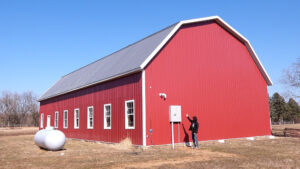
Kitchen Island, Barn Power – March 2024 Update
Welcome to my shop! This is a quick update to let you know what I’ve been up to. This big chunky thing is the leg
Today we’re going to be sawing some boards. I have a bunch of small stuff that I want to get cut up, so I’ll be cutting mostly edged four-quarter.

I have a couple of small walnut logs, as well as these cherry logs here, plus a bunch of cap pieces from a bunch of logs that I have sawn, that I will be processing into boards today.
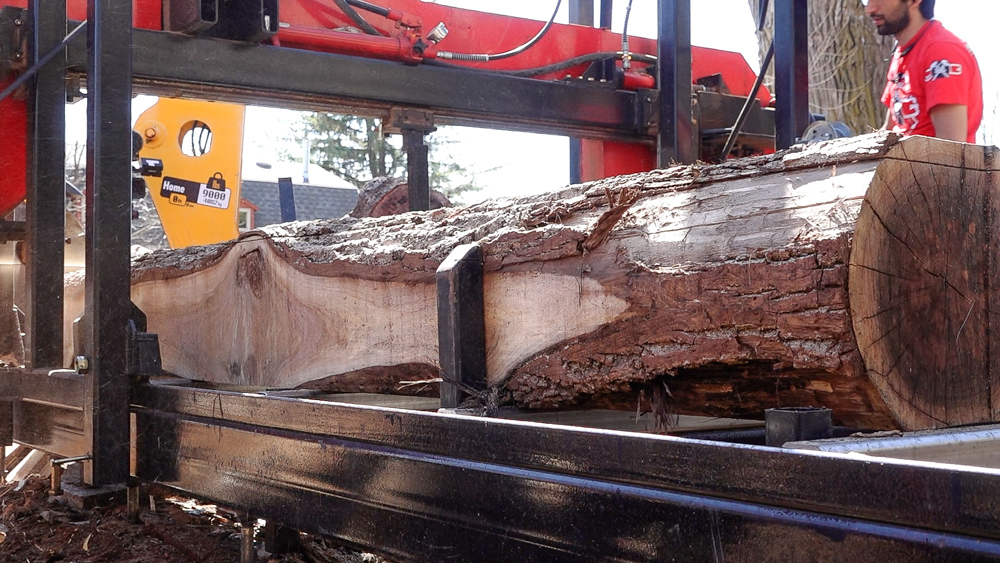
First I’ll grab the new logs and start getting those turned into cants. Usually when I cut four quarter, I’ll make a few cants and then I put all the cants on the bed and slice them all at once.
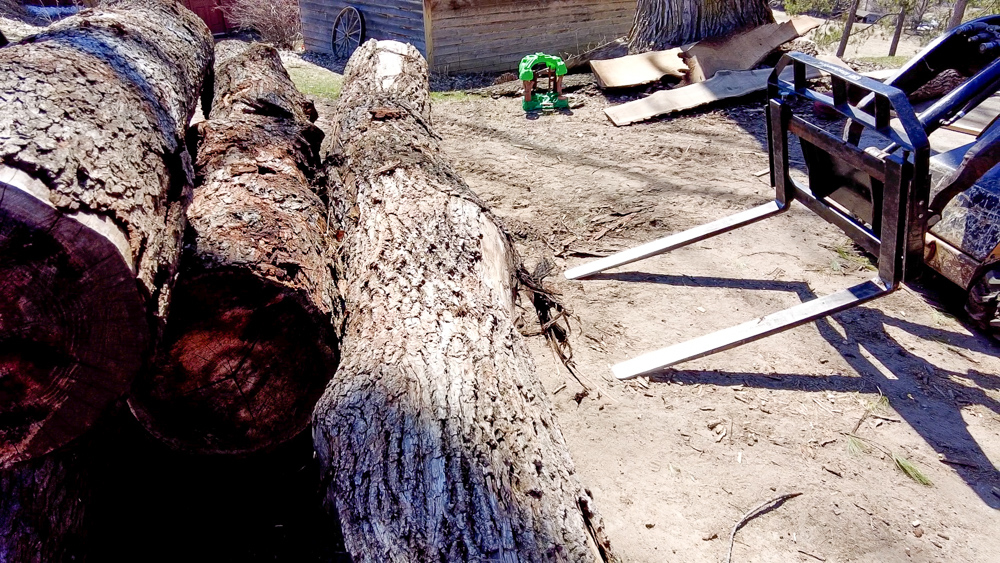
With this log though, I’m not going to cut it into edged lumber because it has a really cool bend in it. If I were to cut it into edged lumber, I would lose a lot of material. So I’m going to saw it with this S curve in it. I think it could make for some interesting grain and patterns.
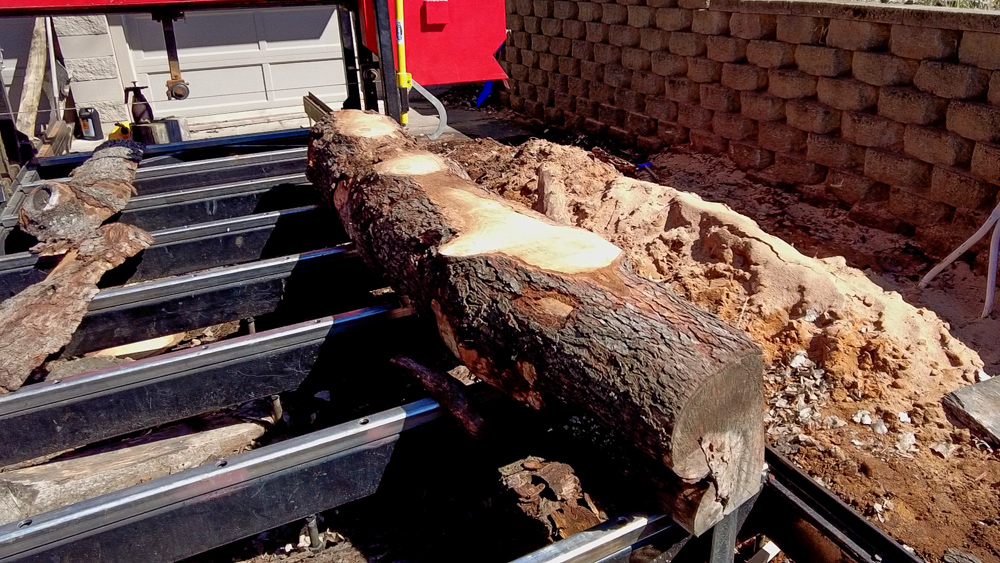
To explain what I’m doing with the facing: the face that is up and the face that is on the bottom right now are going to be the edged faces. Those will be the edges of the boards, and you can see it’s pretty conservative. I’m kind of hit-and-missing in a bunch of different places and sawing conservatively in order to make as wide of boards as I possibly can.
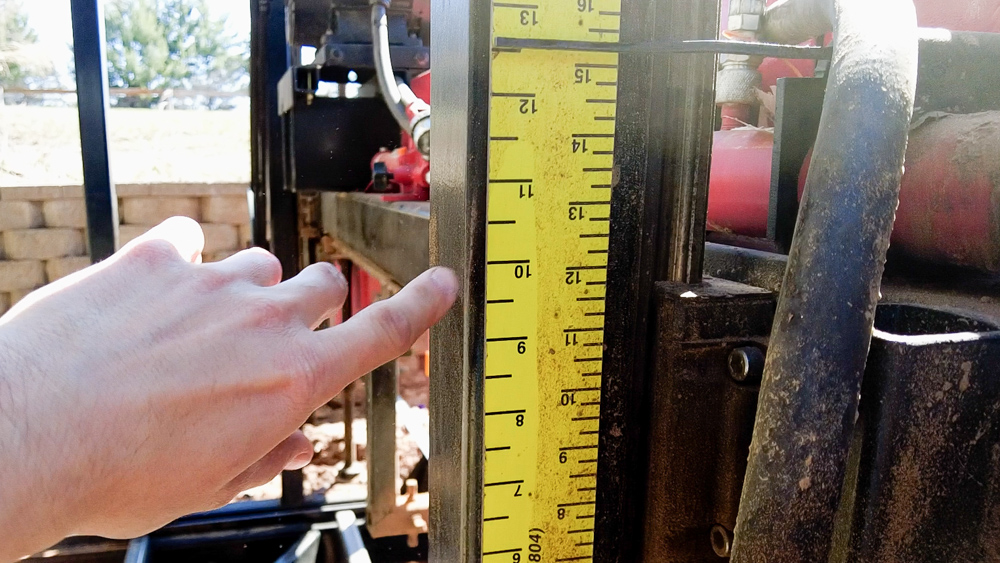
I’m going to do four quarters, so I can use my lumber scale for that. To get my first board off of the cant, I’ll pick whatever number gives me the best starting point, then make a cut at every one of these numbers. And you can see on this scale that four quarter is more than an inch, it is actually an inch and an eighth, plus the curve of the blade. I like to use the quarter scale system to talk about wood because I think the industry should be referring to rough sawn lumber in the quarter scale so that you know it is rough sawn.
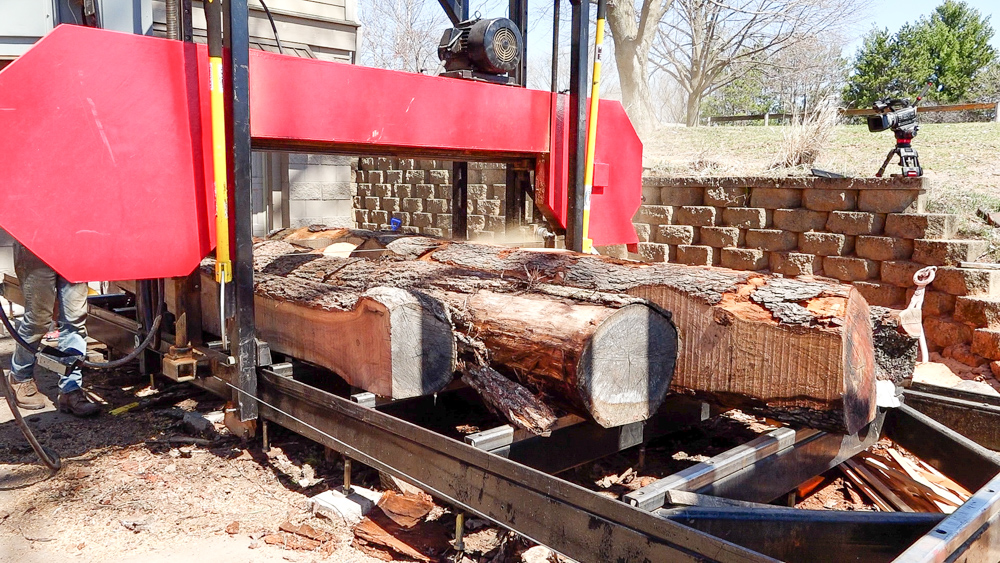
Now I can load up the sawmill bed with all these cants and start slicing them up!
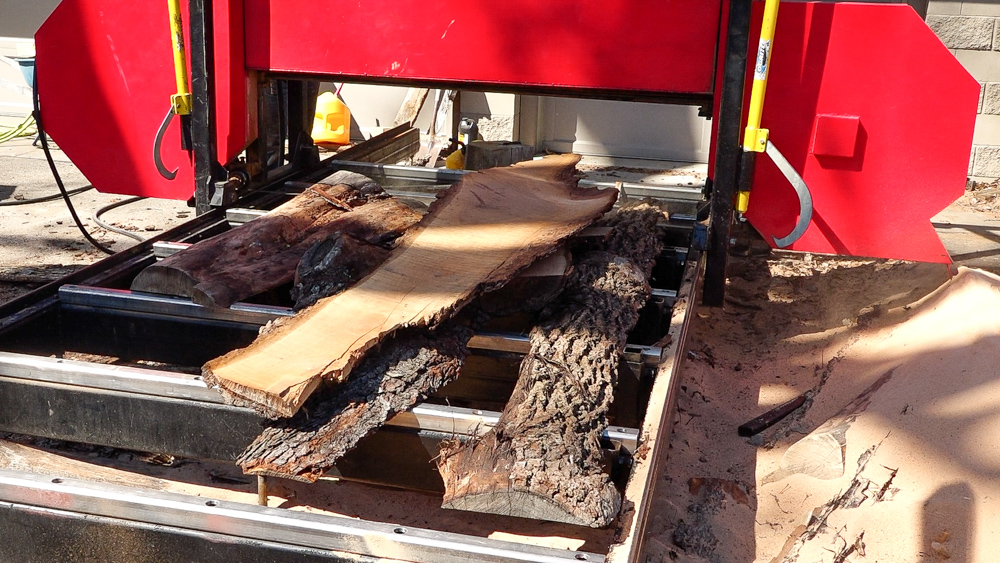
I’m also going to cut up some of this smaller stuff. A lot of this is reclaimed waste pieces, and some of it is kind of iffy. Best case, it’ll get used for small projects. Worst case, I’ll turn it into stickers and use them for that.
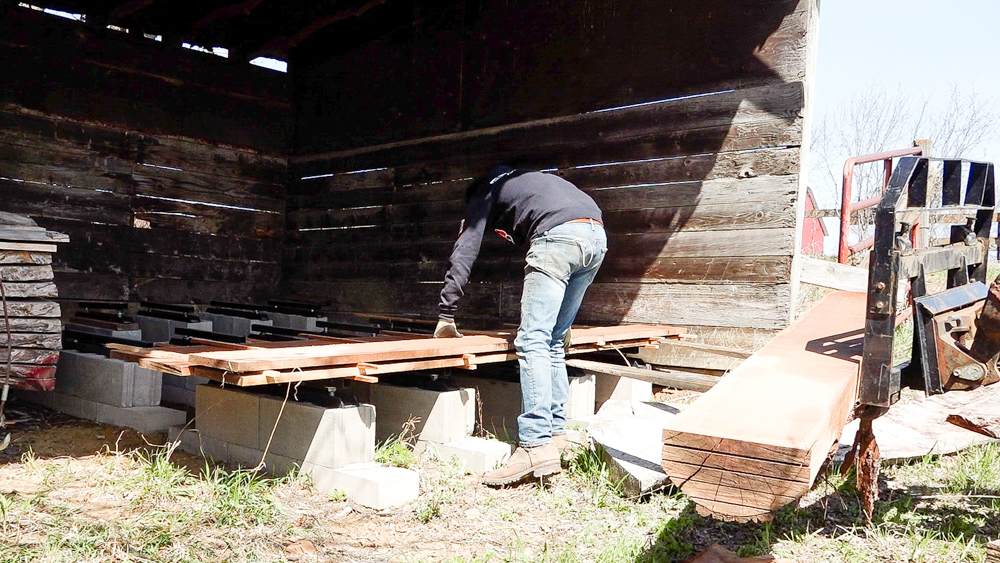
Last fall I cleared out this horse shelter, so now I can use this space for the boards I cut today.
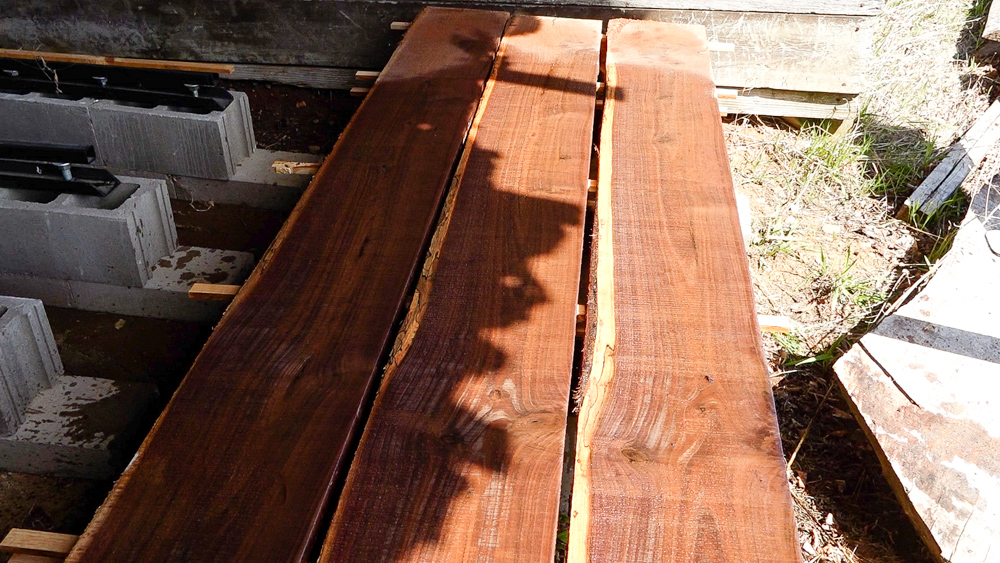
Here’s a look at some of the walnut. It has some spalting in the sap, which is cool, and the heartwood is clear and clean. That’s a nice piece of wood.
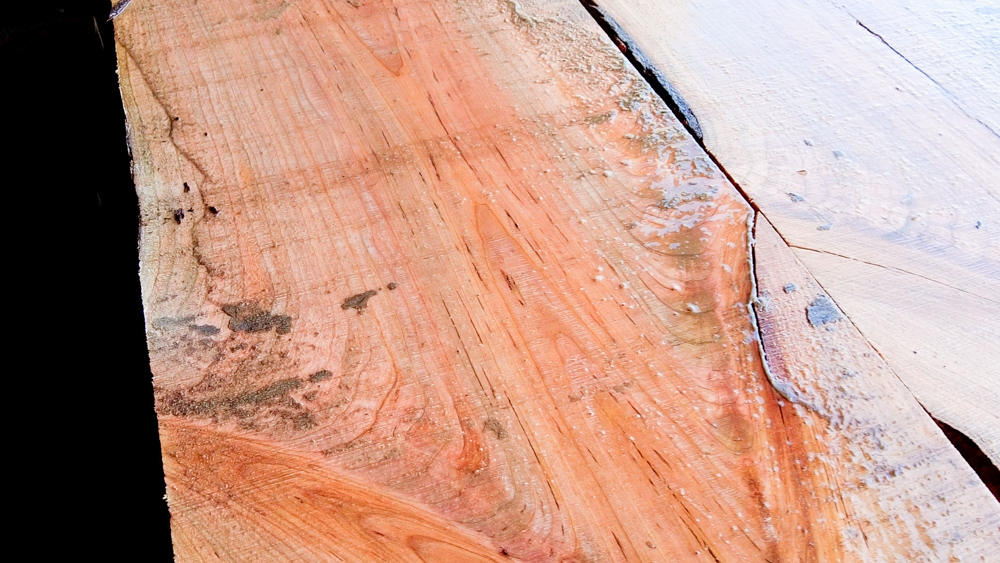
Look at that: some nice figure and color. These boards are a lot bigger than I thought too. They always look bigger after they’re cut, somehow.
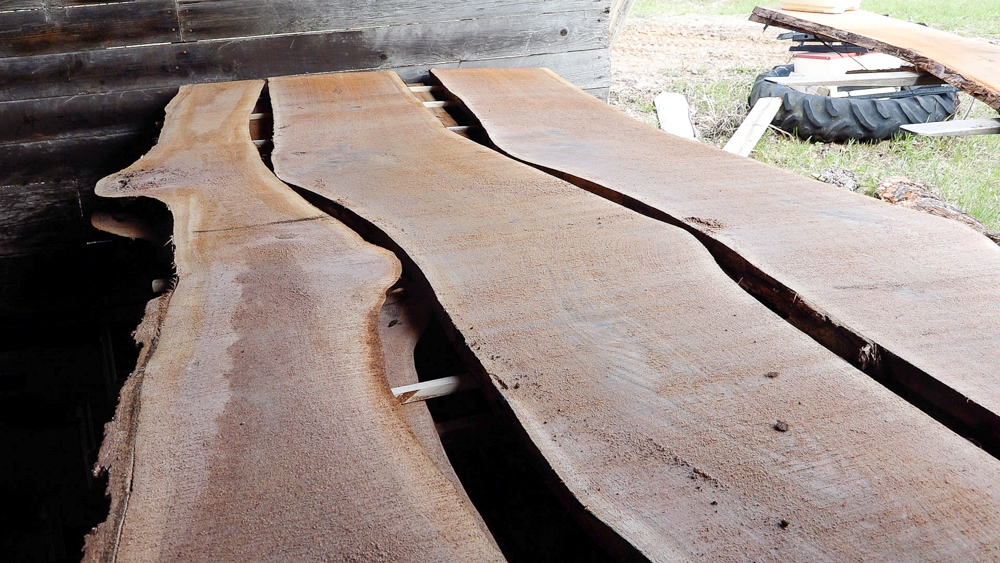
Just like the other boards, these curvy walnut boards are quite a bit bigger than the log seemed out in the yard. These are about 16 inches wide, and they have this nice, fun, graceful curve there.
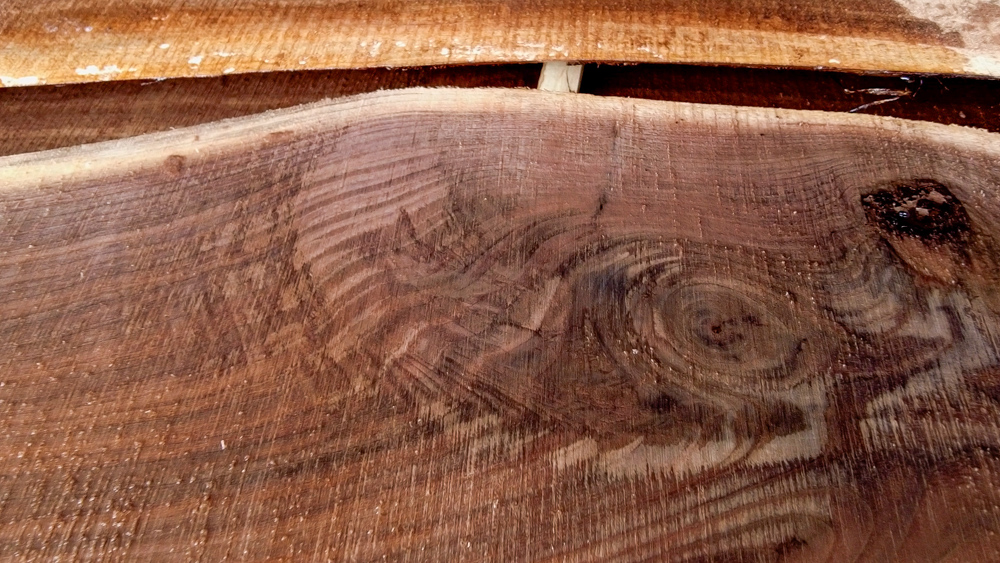
Here’s a closer look at some fun crotch figure here in the middle of those curvy walnut boards. Everything else is mostly clear. Some really nice stuff.
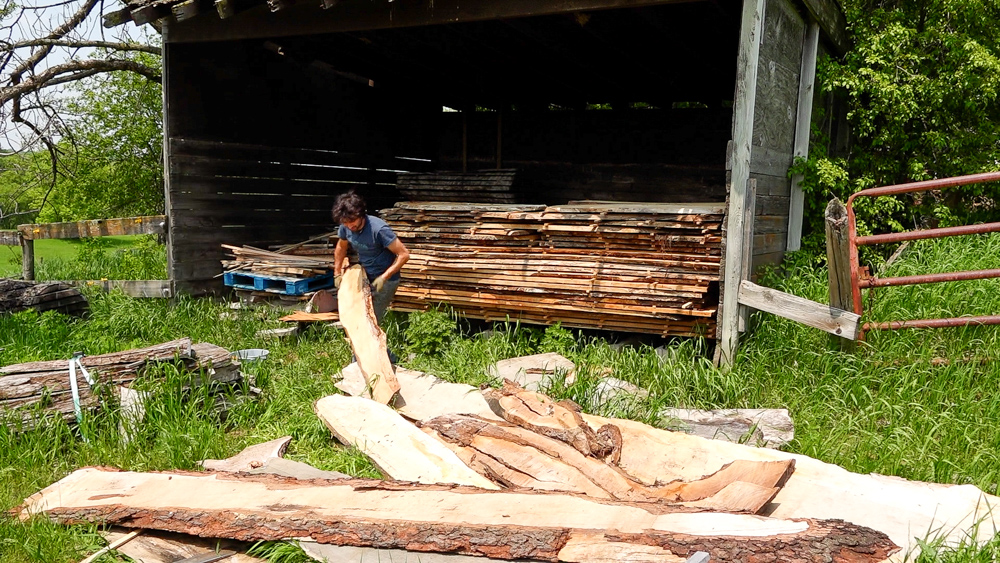
Now I’m onto all of the junk stuff. The downside of trying to salvage all the random little pieces of wood is now I have to stack all of them.
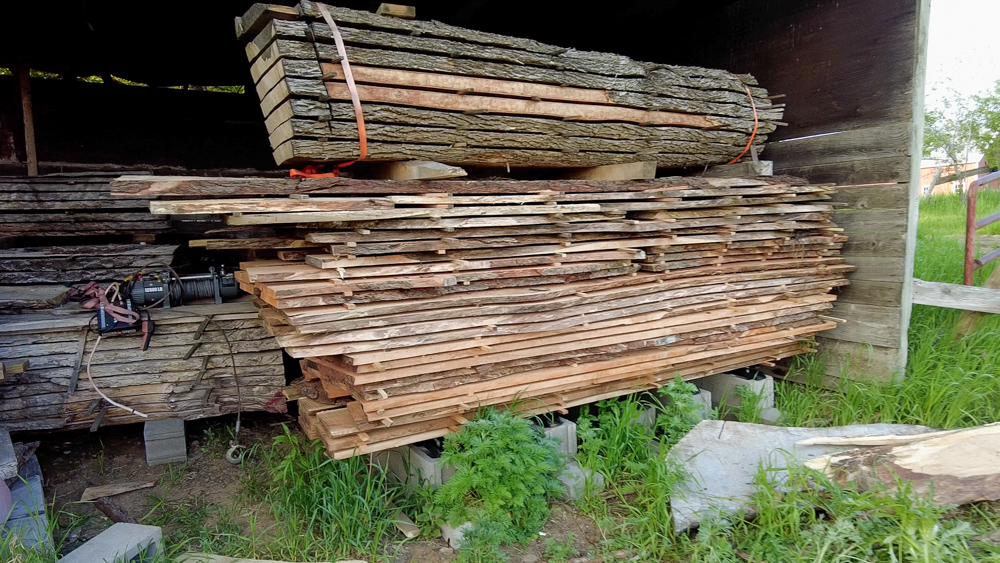
I think I have about 700 board feet here. That’s a pretty good amount for some smaller logs, and it’s nice to clean up the log pile a little bit.
Thank you as always for joining, I greatly appreciate it. If you have any questions or comments on sawing smaller logs, please feel free to leave me a comment. As always, I’ll be happy to answer any questions you might have. Until next time, happy woodworking.


Welcome to my shop! This is a quick update to let you know what I’ve been up to. This big chunky thing is the leg

Welcome back to the home renovation. This time I’m going to be working on the kitchen island. Here is a small model of the island.
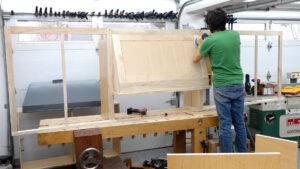
Welcome back to our home renovation. Today I am going to be working on this wall. It needs some upper cabinets and the surround for